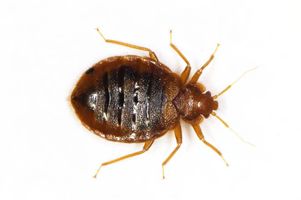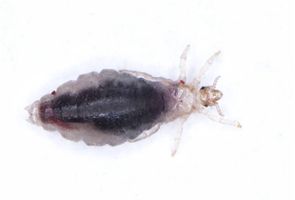Blood sucking arthropods (e.g. lice, bed bugs, mosquitoes, fleas and ticks) significantly affect human health. Infestations with head lice are a worldwide hygiene problem. Since the late 1990s, the numbers of bed bug infestations in public buildings and private homes are dramatically increasing. Due to the fact that these parasites develop resistance against insecticides, the need of new active substances and products for their control is evident. Furthermore, the demand for efficacy testing increases, for the development of new products and active ingredients as well as for regulatory purposes (e. g. proof of efficacy for authorization of biocidal products according to the Biocidal Product Regulation, BPR Regulation EU 528/2012). It is important and necessary to have efficient products for control of blood sucking arthropods available, but efficacy testing of these products before introduction to the market is highly dependent on laboratory breeding of these parasites. However, the feeding of blood sucking arthropods on a vertebrate host (e.g. rabbits, guinea pigs) is an animal experiment according to the Animal Protection Act and has to be approved by the competent authorities. A feeding technique for bed bugs and body lice without conducting animal experiments would enable laboratories to perform important basic and applied research with these organisms.
The objective of this project was the development and establishment of a feeding technique for large-scale breeding of bed bugs and body lice without the use of vertebrate hosts.
Within this project the rabbit host of the laboratory bed bug strain was replaced by membrane feeding with defibrinated porcine blood on a Hemotek® feeding system. As a result, a reduction of about 100 animal experiments per year was achieved at the German Environment Agency. With the replacement of these animal experiments we reached the main goal of the 3R research. Furthermore, this feeding technique will promote research on bed bugs in public and private research facilities.
Successful laboratory maintenance of head or body lice is rarely described in literature. Up to now, no membrane feeding technique of a large-scale breeding of head and body lice without a vertebrate host is described. Experiments with body lice revealed that in general membrane feeding with animal blood is feasible. The body lice used in our experiments were adapted to the rabbit host for decades. This can be a reason that a cross-generational development was only possible with rabbit blood under laboratory conditions. With blood (as porcine, bovine, ovine and equine) from farm animals the development of the body lice was not accomplished. Further research in the next two years should show whether a large-scale breeding of body lice with membrane feeding using rabbit blood is possible. In order to fulfil the requirements of the Animal Welfare Act a rapid changeover to permanent membrane feeding is still the most important aim.


 English
English







